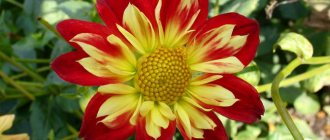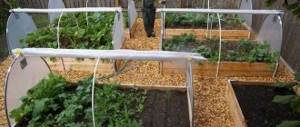Orchids - overseas beauties, whose homeland is distant Singapore - have firmly settled in the apartments of Russians. They have long ceased to be considered exotic. They adorn the windows of city apartments next to the familiar violets, begonias and tradescantia.
Spectacular flowers look very unusual: it is simply impossible to confuse an orchid with any other plant, it is so original with all the variety of shapes, colors, and shades.
Growing orchids at home does not involve any super-complicated regular care procedures, which explains the wide popularity of this species. The Internet is replete with photo and video instructions on how to properly care for an orchid; below are the main key points.
Types of Phalaenopsis
If you come to a store and stand in front of a display of orchids, most likely you are looking at a phalaenopsis orchid. There are more than 40 species. There are species up to a meter tall and there are dwarf ones up to 20 cm. Bright green leaves and peduncles with a large number of flowers (up to 40 pieces), as well as aerial roots covered with a waxy coating are the calling card of this species.
The second most popular species in our stores is the Vanda orchid. It is usually sold in large glass flasks without primer and looks very impressive.
Photos of these two types of orchids are easy to find on the Internet - take a look once - and you will not be mistaken in your choice. Both phalaenopsis and Vanda orchid are considered the best types of orchids for the home, since they differ from other species in their adaptive ability and unpretentiousness.
What to do before buying an orchid?
Before buying an orchid, think carefully about where you will place it. In nature - in humid forests - it occupies the lower floors, hiding behind the dense crown of trees. She really needs light, but absolutely cannot stand direct sunlight.
If you plan to place it on a window, it is better to cover the window glass with solar control film. or look for another place for it.
Where to move the orchid in winter
In the period from October to March, when there is little sunlight and on the windowsill, the radiators are “frying” at full power, and the glass is too cold, it is better to rearrange the orchids. The best option would be a rack, cabinet or table near the window so that the flower catches the minimum amount of sunlight that is available, and does not suffer from drafts and temperature changes.
You need to move the flower carefully and it is advisable to orient it towards the light source with the same side as it was in the previous place.
You can grow an orchid on any window, but in some cases, to provide it with comfortable lighting, you will have to make a little effort.
Source
Quarantine after purchase
After you bring the plant home, do not rush to replant it, let it stand for several days in its new place. Limit watering if the soil is dry, and watch this beauty.
After a couple of weeks, when it is clear that everything is fine with her and she is not susceptible to any disease, she can be transplanted, if necessary.
Watering
Hundreds of articles have been written about proper watering of orchids, but there is no single conclusion that watering should be done using only one single method - and no other.
There are several watering options; the basic rule for watering orchids is one: do not over-moisten the substrate, otherwise, if there is insufficient ventilation, this can lead to the formation of root rot and the death of the plant. Orchids tolerate temporary drought better than constant stagnation of water.
In summer, it is better to water the flower once a week during the dormant period, in winter - once every 10 days, during flowering - more often, sometimes even every day, not forgetting to remove excess water from the pan.
Many orchid growing experts agree that the optimal method for this plant is to water it by immersing the pot in water. To do this, you need to take water a little warmer than room temperature and lower the pot into it for 5-10 minutes, then remove it, let the excess water drain and return the plant to its usual place.
In the wild, orchids live in humid forests and are evolutionarily adapted to absorb moisture with aerial roots. Therefore, in addition to the main watering, this plant loves a finely diffused shower-fog. Frequent spraying will make phalaenopsis very happy, but you need to make sure that during spraying the water does not stagnate in the petioles.
What an orchid flower looks like: characteristics, size and description
It’s worth starting to describe the orchid flower with the fact that all its types amaze with an endless variety of shapes, colors, patterns, structures and smells. The size of an orchid flower depends on many factors such as species, growth habit, number of shoots, type of plant, etc. the smallest flowers are 1 cm, the largest are 25 cm in diameter.
In order to imagine what an orchid flower looks like, you need to know the basic botanical characteristics. The structure of their flowers seems complex, but in fact it is surprisingly simple. The characteristic of an orchid flower is that they all consist of:
- Three outer colored sepals, or sepals (sepalen), fused in some species, which alternate with three petals, two of which are called petals (petaien),
- And one middle modified one is a lip (tabellum), distinguished by its unusual shape and color, which serves as a landing site for pollinating insects,
- In addition, a special component of an orchid flower is the column (columna), formed by the stamens and pistil fused in the center of the flower.
Look at the variety of home orchid flowers in the photo, which shows blooming specimens of different species:
Reproduction
Orchids reproduce well vegetatively: by dividing the stem with leaves and aerial roots formed by children, leaves, cuttings (pieces of a faded peduncle).
If the orchid has grown very large, if the pot is clearly too small for it, if it is in the dormant phase and has many aerial roots, then it can be successfully divided into 2 bushes. To do this, you need to cut off the top of the bush with the maximum number of aerial roots, leaving only a couple of leaves at the base. And plant each of the resulting individuals separately.
- Catharanthus: planting instructions, care features and growing in the garden (90 photos)
Violets - rules for caring for and decorating the interior with blooming decorations (105 photo ideas)
Cactus - popular types of home cactus and rules for creating a composition of succulents
If on the peduncle, in addition to the buds, a shoot with additional aerial roots has formed, then after flowering it is cut off and rooted separately.
The peduncle itself can be cut into pieces 5-7 cm long (it is important that each such shoot has at least one dormant bud) and placed horizontally on a nutrient substrate of moss.
If you maintain a high level of moisture, after some time, first roots and then leaves will begin to develop, and after six months you will get a fully formed young plant.
As you can see, it is not difficult to grow beautiful orchids in a transparent pot, following the instructions given and common sense. With proper care, the plant will generously thank the owner with annual, long (up to 9 months) and abundant flowering.
Growing orchid flowers at home: how to care for the flower
If, throughout the year, when growing orchid flowers, you care for the plants in accordance with the individual rhythm of life of each of them, then you can easily achieve flowering.
Before caring for an orchid flower, you need to know that at the end of winter and spring a period of active growth begins. At this time, you need to provide the orchids with good lighting and enough water.
In summer, the orchid develops intensively, which means it needs regular watering and feeding. To supply the plant with the nutrients it needs during the growing season, there are special fertilizers.
At the end of summer and autumn, pseudobulbs and shoots ripen and flowers are laid. At this time, it is recommended to reduce the temperature by 4-6 °, full “autumn” lighting and less intense watering.
In autumn and winter, the stage of dormancy and flowering begins. Many orchid flowers at home bloom at the beginning of the dormant period or during it. Winter care comes down to the motto: “More light, less water.”
A lover of indoor plants can also propagate orchids. If you use the vegetative propagation method, you will achieve good results. Propagation by seeds is best left to specialists, since this is a difficult and time-consuming task.
Photos of orchids
Medinilla - secrets of care and tips on how to grow a flower at home
Home begonia - planting, care, cultivation and propagation of domestic flower species
- Chrysalidocarpus - secrets of care and rules for keeping it at home











